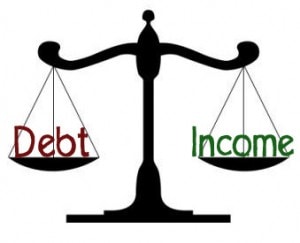
Definition:
Debt to income ratio is a calculation made to determine what percentage of your gross income is tied up in debt. It adds up your monthly credit obligations (including the payment of the loan you are applying for) and divides them by your gross monthly income.
Example:
Mortgage Payment- $1,500 Gross Monthly Income: $5,500
Car Loan- $350 Calculation: Total Monthly Debts/ Gross Monthly Income= DTI
Student Loans- $150 $2,100/ $5,500= 38.18%
Credit Cards- $100
Total Debts: $2,100
DTI’s Importance:
Debt to income ratio is a critical number because it shows a borrower’s ability to pay for the loan they are requesting. There are many new regulations stipulating what an acceptable Debt to Income Ratio is. Many lenders may become more conservative to meet the guidelines of qualified mortgage and may not lend to borrowers above 43% DTI. Regardless of how high your credit score may be, how much money you have in savings, or how wonderful your credit history is, a lender must look at your debt to income ratio to determine if you are eligible for the amount of mortgage you are requesting. If your debt to income ratio is too high, you may have to settle for a lower loan amount.
Before you apply for your next mortgage it is advisable to see what your debt to income ratio is. Perhaps you may find that you have a very reasonable debt to income ratio, or perhaps you may need to lower this ratio. It will be helpful to know this number before applying for a mortgage so you can make any changes that may be necessary.
